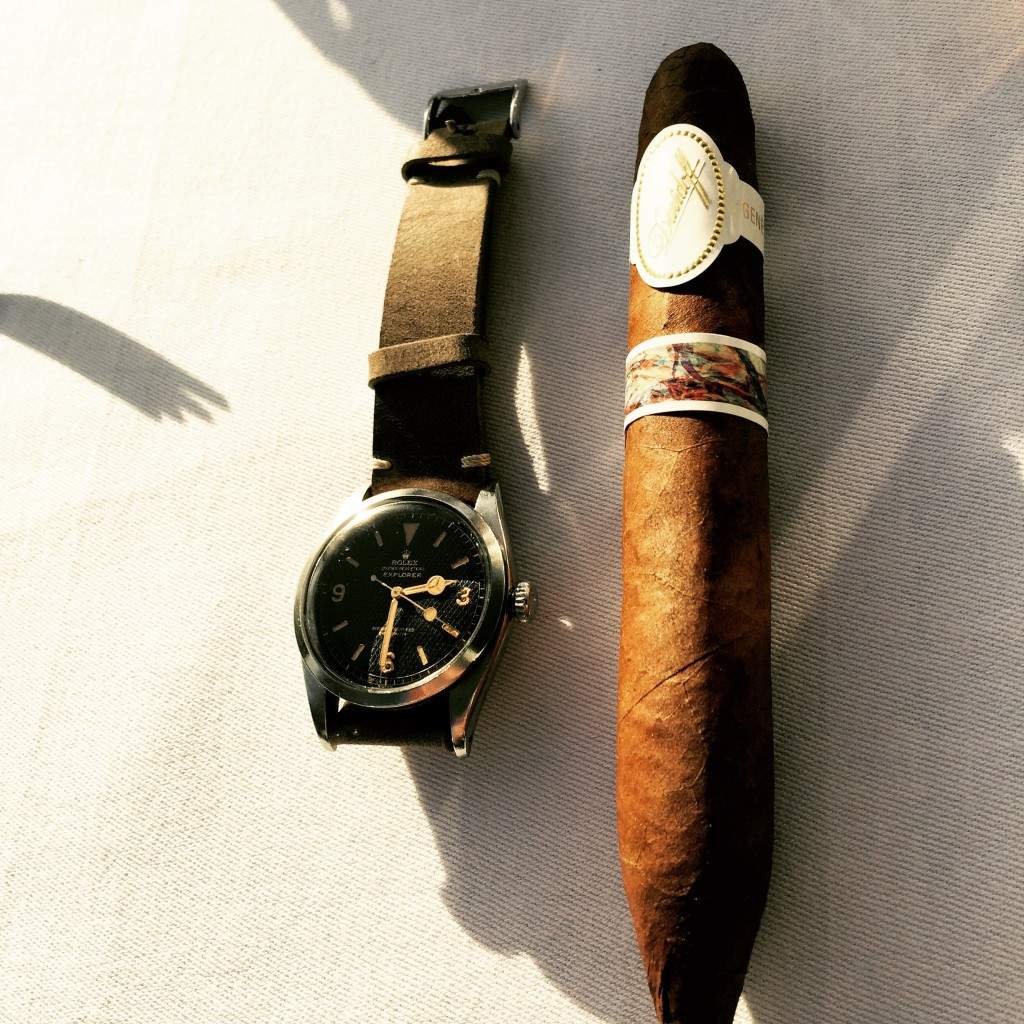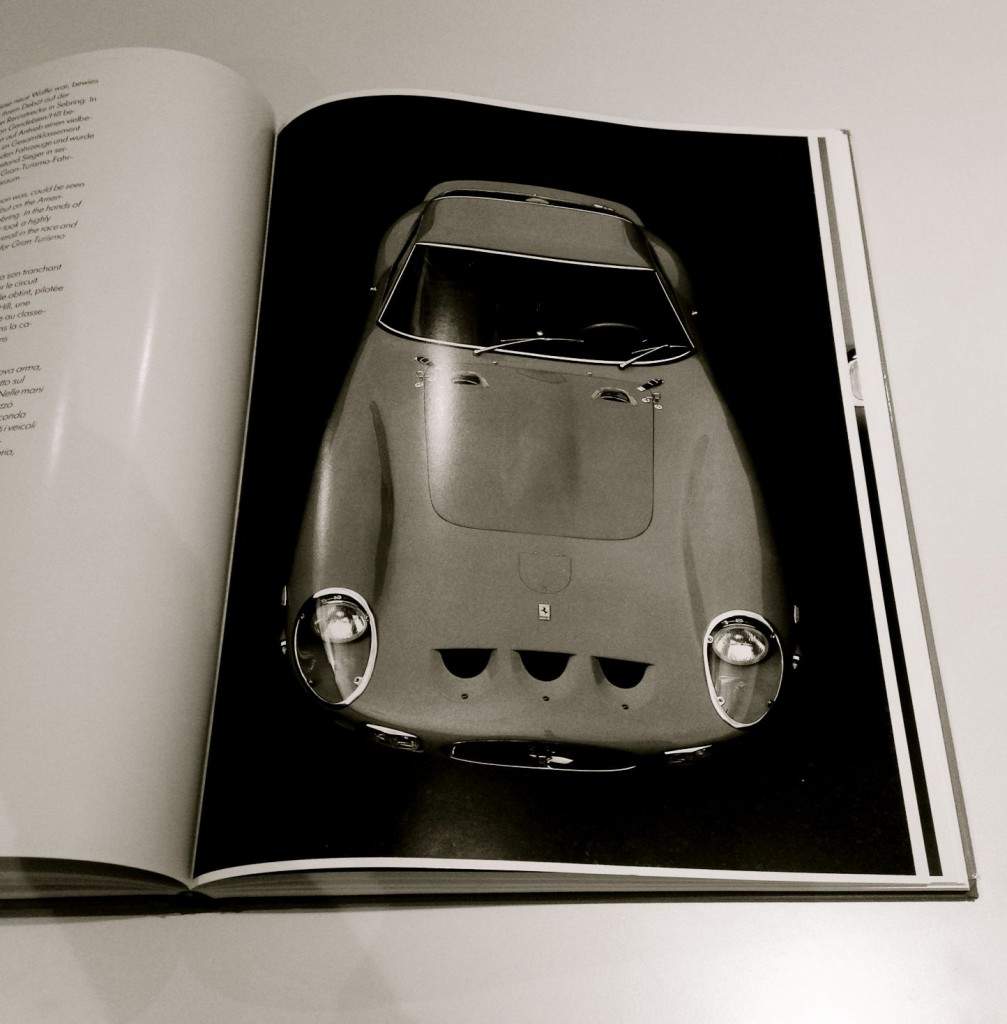
Vintage Ferrari: The best books -a personal view
There are more books on Ferrari than any other car brand in the world.
This is the power of the brand called Ferrari.
Even if you narrow it down to the vintage Ferrari section – the amount of books is still completely overwhelming. Without a doubt Ferrari has a rich history. Not only was its founder Enzo Ferrari a legend, but Ferrari built some of the best road cars in the world in the 1950s and 1960s. Ferrari also is the brand that has had the most success in racing and had the best racing driver’s drive for them.
While people today buy Ferrari for the great image the brand has, few people understand the history. To be blunt: I fell in love with Ferrari not because of the cars but because of their history. Once you read into it – it becomes a never -ending fascination- even obsession. I can proudly say that I have one of the best collections of Ferrari books out there.
Not only do I have many (about 80 in all different languages including Japanese) but I also have all the issues of the important periodical ‘Cavallino’ as well as all the Ferrari yearbooks from 1951-1970. There is no important vintage Ferrari book written that is not in my library (except for perhaps some Italian ones).
If your interested in Ferrari and want to learn about their history – here are the 10 most important books, resources you should buy. They are in no particular order.
1. Ferrari Berlinetta by Groh / Müssig / Winter
Book summary: I believe that every person interested in classic cars particularly Ferrari should have a great coffee table book.
This book is good because it concentrates on very specific Ferrari models: The 250MM, 250 SWB, 250 GTO Series I, 250 GTO Series II, 250 Lusso, 275 GTB/4. These are some of the most beautiful cars that Ferrari has ever made. The pictures are absolutely first class – this is the main strength of this book (see main picture above of the GTO). Besides the brilliant photography- the book also describes each of the models with good technical information. The book is also written in English, German, French and Italian. Another bonus is that the book has the introduction written by none other than Sergio Pininfarina.
This is in my opinion – the best coffee table book on vintage Ferrari made. The photographs and settings are exceptional- this book cost its publisher a fortune.
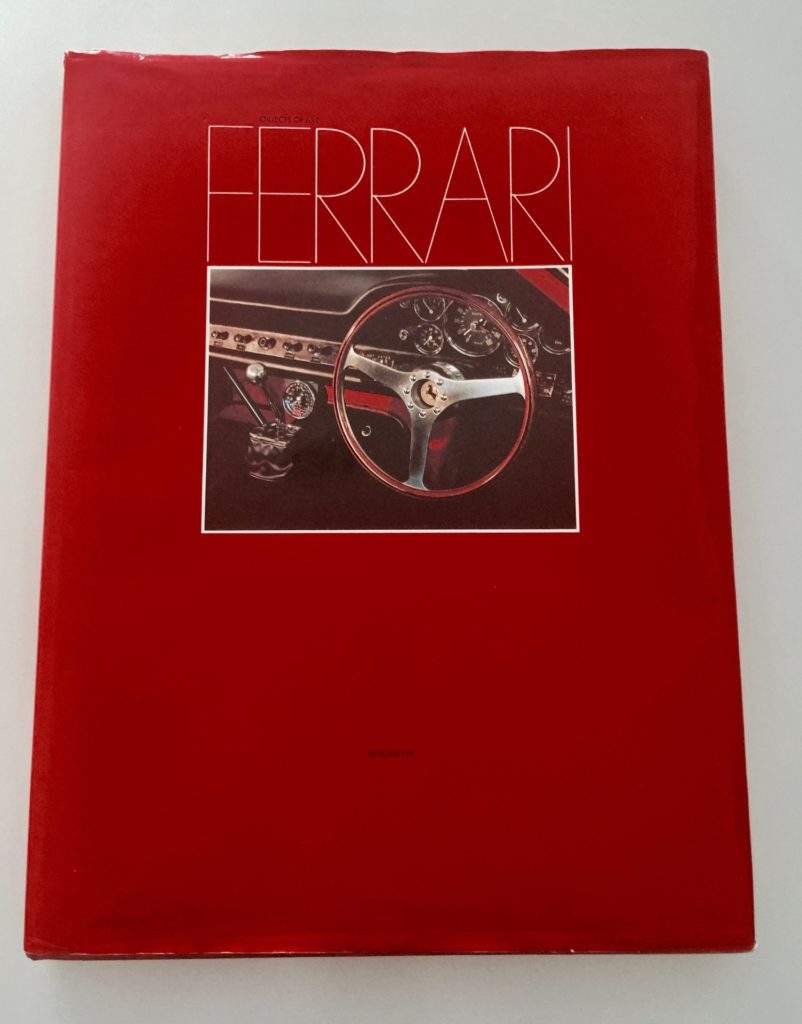
2. ‘La Ferrari di Pininfarina’ by Mazzucchelli, Nov 1998
Book summary: This is without a doubt one of the best books to buy if your interested in Ferrari history.
The book is about Pininfarina, the master coach builder for Ferrari. I would argue that in many aspects -the second most important person besides Enzo Ferrari was – Batista Pininfarina (Chinetti & Scaglietti come close behind). Batista and his son Sergio and team are responsible for designing some of the most beautiful cars Ferrari is famous for including: 250 SWB, 250 S2 Cabriolet, 275 GTB, 250 Lusso, 342 America and the 375 Plus. The book offers an excellent history of Pininfarina and how it co-operated with Ferrari. It includes exceptional period photographs of all the beautiful cars Pininfarina made. Even though the 250 TDF and 250 California were not ‘officially’ designed by Pininfarina- the Pininfarina footprints can be seen. The book has a section of road cars but also a section devoted to competition cars including the 375MM. Unfortunately the book is long out of print and is today a collectible (prices start from $500 to $1500).
It is in my opinion one of the best books ever written on Ferrari road cars. Well worth the very expensive price.

3. ‘Ferrari 40 years on the road’ by Stanley Novak, 1988 Dalton Watson publishing
Book Summary: A person interested in Ferrari road cars from 1947 to 1987 is well served by reading this.
The book concentrates on the golden period of Ferrari from 1947-1967 where Ferrari made some of the most beautiful road cars. The book covers the early cars well including the 340, 342 and 375 America as well as the legendary 250 series including the 250GT Cabriolet S1. There are color pictures as well as black and white period photograph including rare pictures of Motor show cars that were actually on the stand. For readers interested in Ferrari road cars this book is a good summary with interesting and rare photographs. For those interested in competition cars like the 250GTO and LM this book is useless as it completely omits these important cars.
The book is very reasonably priced as it is long out of print. For a collector of Ferrari books – this is also a must have.
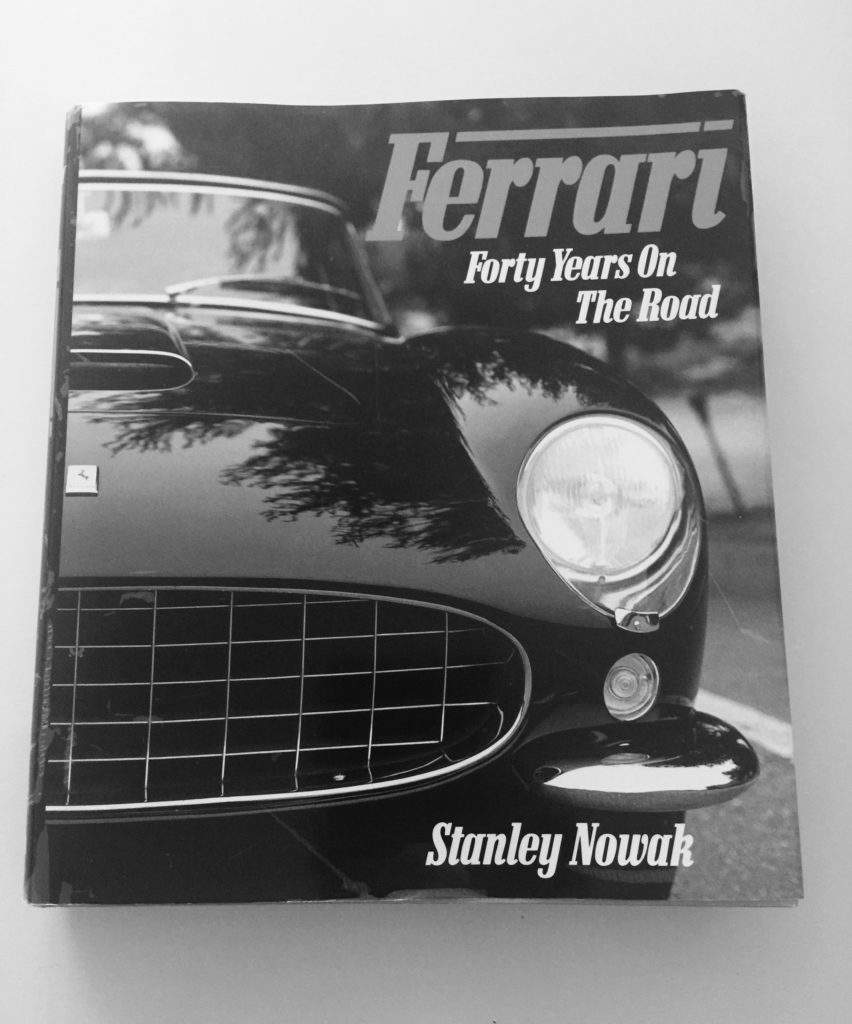
4. Original Ferrari V12 1965-1973 ‘The Restorers Guide’ by Keith Bluemel
Book Summary: For those who don’t know Keith Bluemel is one of the most important experts on vintage Ferrari.
His knowledge is vast and he knows every single detail of every model right down to knowing if the correct screw is being used. While this book concentrates on the 275 GTB and other later cars – I would recommend any of his ‘Restorer Guide’ books. They exist in the earlier period of Ferrari (from 1950-60) and he has done also Maserati. These restorer guide books are especially useful if you plan to buy an old Ferrari (or own one) and want to have the car correctly restored.
Admittedly this book is more useful for owners than just readers of Ferrari history.

5. ‘Ferrari’ by Hans Tanner & Doug Nye
Book Summary: This book is considered the ‘Bible’ for the serious Ferrari historian. Warning: This book is a heavy and at times difficult read.
It is full of technical detailed information especially on the racing history that Ferrari has. As you might have guessed Ferrari has among the richest racing history of any car brand. Hans Tanner was a Swiss national and took details very very seriously. I will be honest I have not read the book completely – rather skimmed through it. For those who are more interested in road cars – they can skip the first 300 pages (which is what I did). However one day I will read that as well. The sports car section (road cars included) is excellent with superb period photography. Again the detail is very strong. Overall this book, like the Pininfarina book, belongs in any serious Ferrari library.
The book is long out of print but can be found on Amazon for reasonable prices.
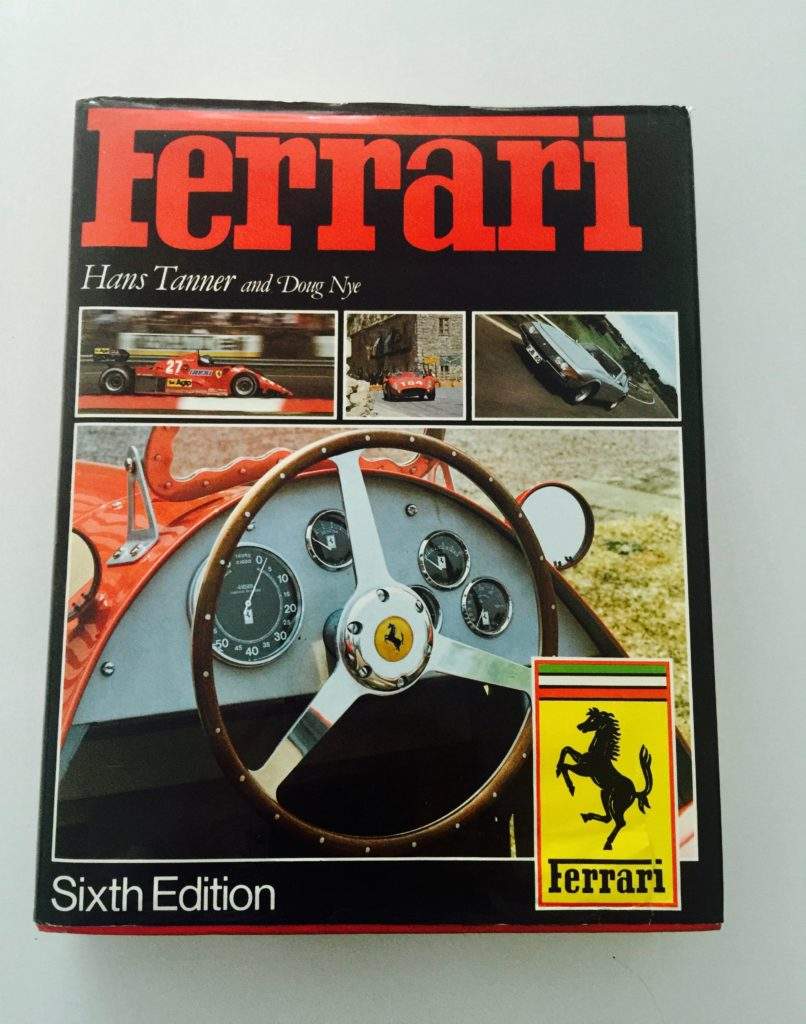
6. Ferrari Legend 250 GT Competition by Jess Pouret 1975
Book Summary: When you get one of the worlds best experts on Ferrari writing about the most famous series, the 250, then you have a book that was destined from the very beginning to become a must have, a classic, a bible for Ferrari enthusiasts and collectors.
This book is dedicated to only three models – but they are critically important in terms of Ferrari history. One could even argue that these three models account for the majority of why Ferrari became so well known: The models are the GTO, SWB and TDF. All three cars brought Ferrari important wins and in each category Ferrari beat the competition hands down. Part one of the book is dedicated to technical details of each model and why Ferrari built them. The book also offers excellent period photography of the various cars and details of the owners and car history.
This book is long out of print but can be ordered on Amazon for around $250 for a good edition (note the poor condition of my copy). Well worth the cost.
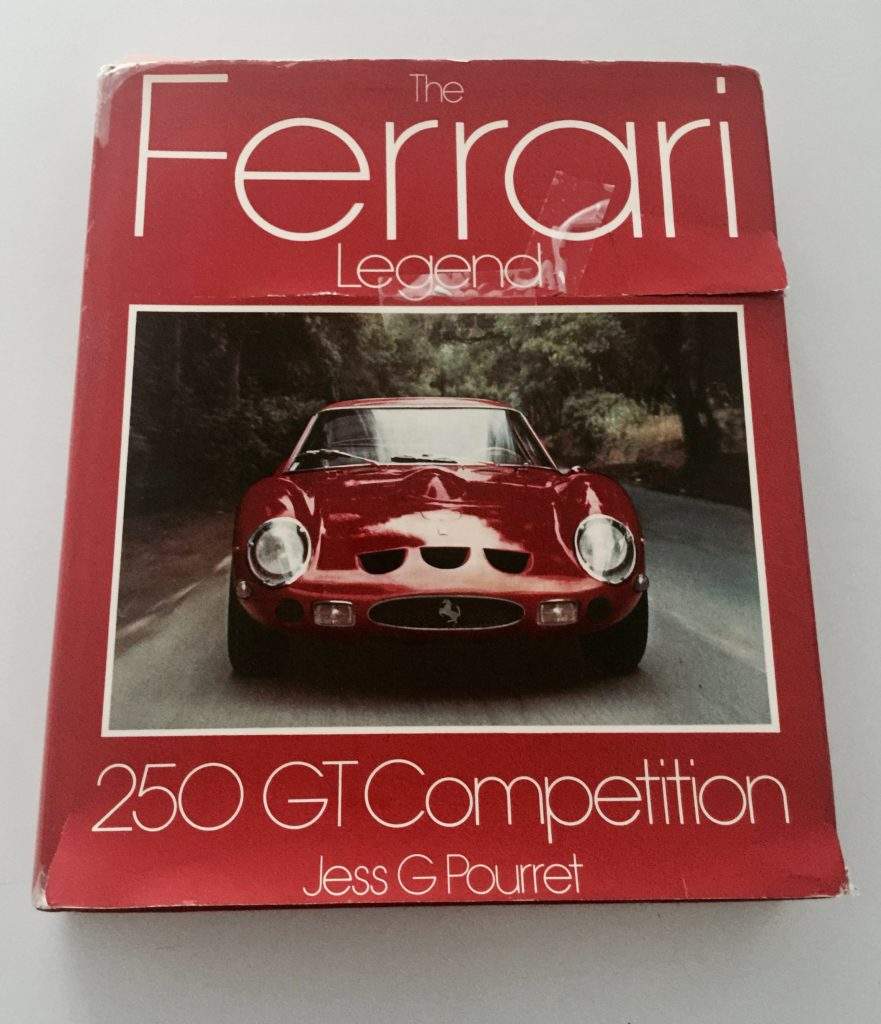
7. Ferrari by Pininfarina by Etienne Cornil
Book Summary: There were many great coach builders for Ferrari. Vignale, Zagato, but the undisputed king of them all was Pininfarina.
Therefore it is no wonder that there are many books dedicated to Pininfarinas work. An excellent book which covers a wide spectrum of cars is the book by Etienne Cornil. It covers very well the early cars such as the 250 series, the 410, the 375, the 400SA but also the V8 Ferraris that came much later like the 308, 328. Even some ‘supercars’ are covered like the F40 and the F50. This book is a first class all round book written in 1998 but revised in 2002. The price starting at $170 on Amazon is not cheap but also well worth the cost.
This book is an excellent all around summary of Pininfarinas design stretching over 50 years.

8. Enzo Ferrari – The Man by Gino Rancati
Book Summary: It is fair to say that the likes of an Enzo Ferrari will never appear again or at least not for another 100 years.
He was the most important man in Automobile history besides perhaps Henry Ford. He was a legend and Ferrari, the brand, is what it is because of him. He was a genius and extreme visionary who saw what could become of his little brand in the end of the 1940s. Like all exceptional men, Ferrari was not without fault. He was in certain aspects a tyrant, a control maniac who would check and call his employees on Christmas evening to demand last minute changes. His talent lay in finding the best people to work for him (and convince the best drivers to drive for him). From Pininfarina to Scaglietti to Chinetti – Enzo Ferrari had built a dream team around him. Mr Rancati does an excellent job at portraying Enzo from a personal side, indeed even showing the weaknesses of an Enzo Ferrari. Despite being an extremely demanding boss, ruthless to many and wanting to win at all costs (even if that meant the death of his racing drivers) Enzo Ferrari had a very human side to him. Rancati captures this extremely well in his book.
It is therefore obvious that to understand Ferrari- the brand -you have to know about Enzo Ferrari. This book provides a good insight to Ferrari – the person.
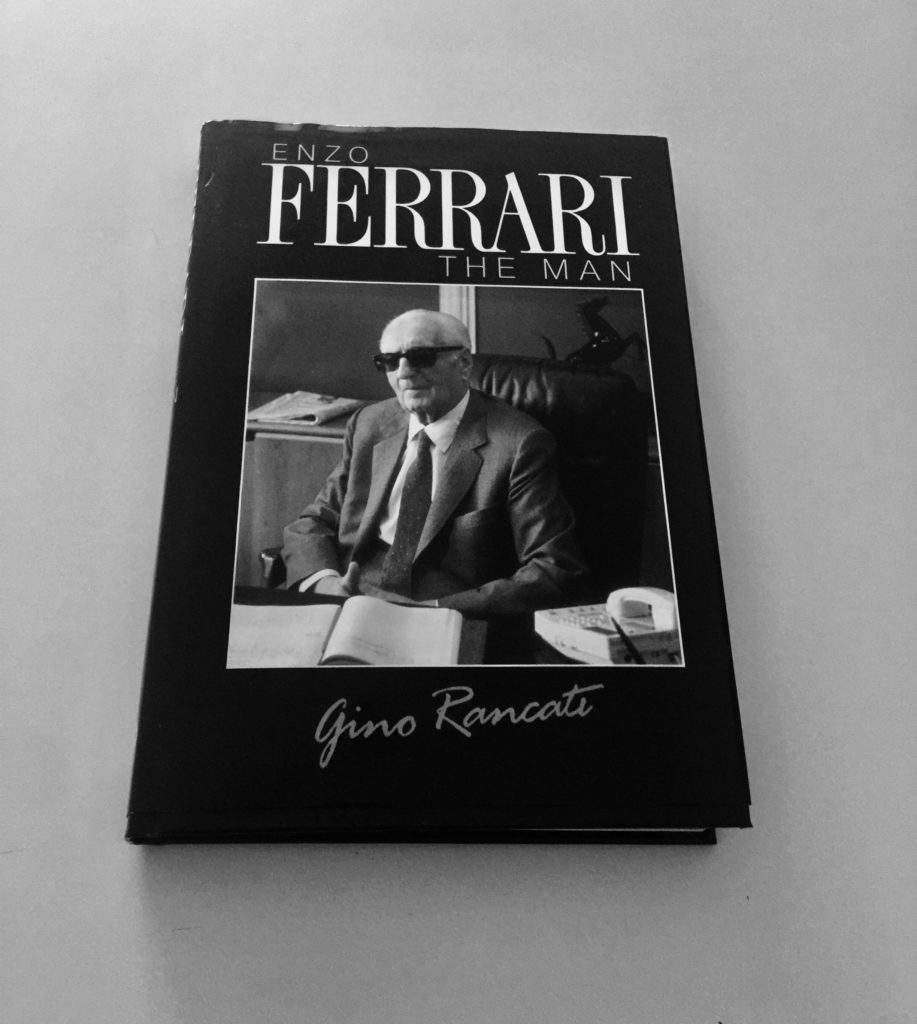
9. Ferrari Pininfarina by Sakumi Yayoi – Korinsha Press
Book Summary: Many of you might not remember- but in the 1980s the Japanese were the worlds biggest collectors of Vintage Ferrari.
Therefore Japan has a close relationship with vintage Ferrari. As a result many books on Ferrari are in Japanese (which I don’t speak or read). At the time, I ordered this book thinking it would be in English. It arrived in Japanese and I was disappointed – until I saw the very rare pictures inside. Not only is there a rare picture of Batista Pininfarina and Enzo Ferrari but there are many pictures of just the ‘cages’ of naked Ferrari chassis of models like the 400SA. Even more suprising there is a picture of Batista Pininfarina on his knees doing work (how cool is that). Best of all this book is tiny and the perfect book to skim through when you have 3-4min time (since I don’t speak Japanese it takes only a few minutes).
This book is small, has excellent pictures and gets my vote for among the best 10 books to have. Best of all it does not cost much ($55-60) for this cute out of print book. The book is also available in English.
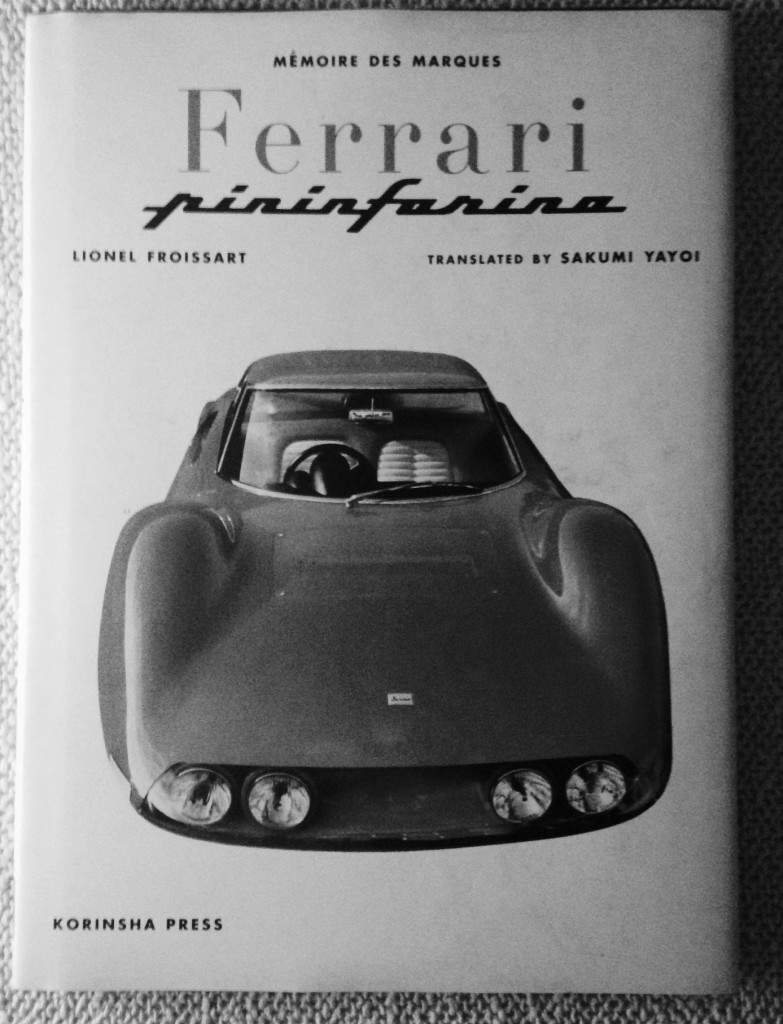
10. Cavallino Journal
Book Summary: First off- Cavallino is not a book but a journal which is published every two months.
It is written by some of the top experts in the world of vintage Ferrari such as Alan Boe, Jess Pourret, Antoine Prunet and Marcel Massini. This journal is an invaluable resource for anyone interested in Vintage Ferrari. Not only are the articles very detailed and exceptionally well researched but the journal also carries a decent Market section where every single Vintage Ferrari is listed with current market prices and estimates (the estimates tend to be a little conservative). I use the market section to find out how many of a model was built rather than find out the newest value of a 250 SWB. All the important Ferrari events in the world are documented in the journal so it is not necessary to always be at Pebble Beach or Villa d’este.
A great resource which can be ordered right here. Cost $46 for US domiciled $86 for people living outside the US & Canada.
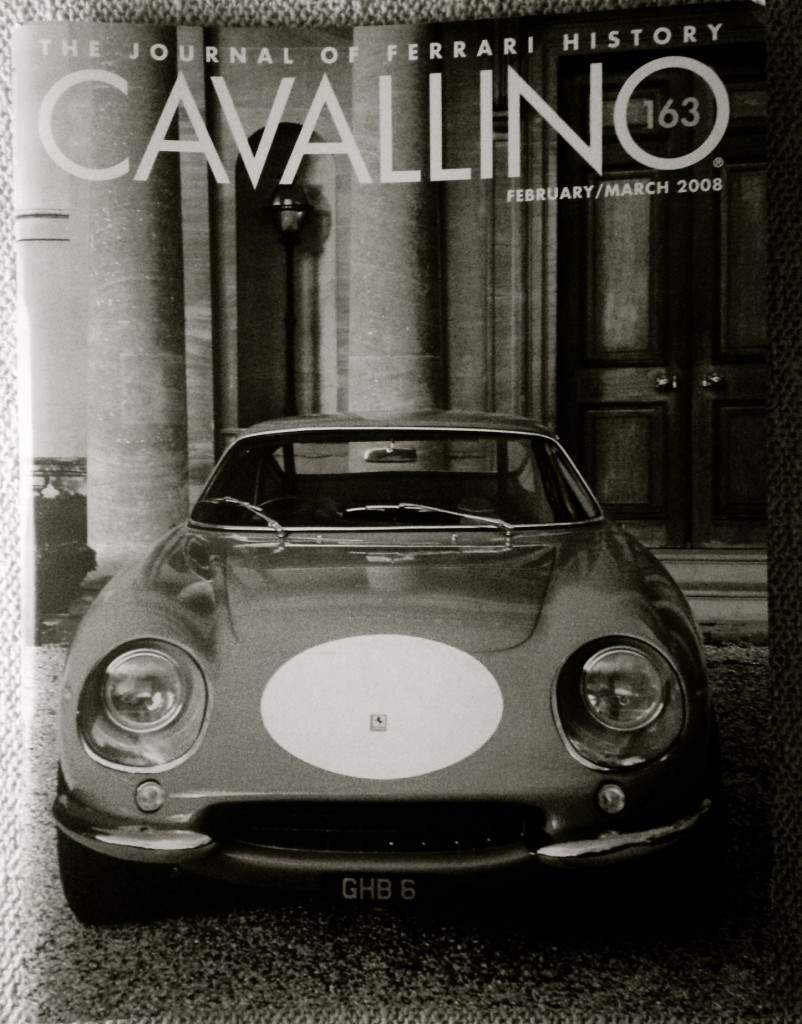
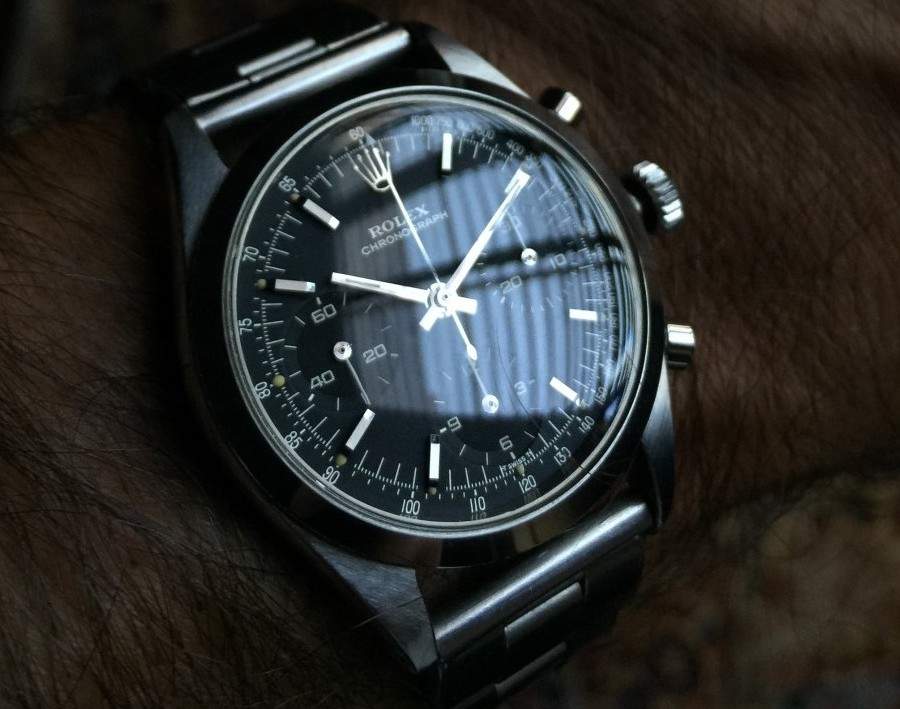
Rolex: Pre-daytona 6238

While most collectors are in love with the Paul Newman Daytona, just recently I discovered another reference that belongs indirectly to the Daytona family- that is just as beautiful.
It is perhaps more understated, probably more exclusive in terms of rarity and simply beautiful. I had known about this reference but never paid much attention to it as it looked very much to me like a Swatch that is popular here in Switzerland.
However when I saw this picture by a Middle Eastern collector on Instagram I had fallen in love.
The watch is a Rolex 6238 Pre-daytona from 1962/63.
Most of these watches were made with a silver dial, but very few were also made with the black dial you see above. The watch is known as the pre-Daytona as it preceded the famous Daytona line. The differences are very noticeable. First the tachometer scale is on the inside of the dial and not on the bezel – a feature Rolex would abandon to improve the readability of racing drivers.
I think the pre-daytona is a cleaner more elegant watch with the polished bezel. We will let the picture do the talking and let you enjoy one of the finest Rolex watches ever made.
(For the post on a recent world record for a 6238 gold watch see article here. )
Picture credit and watch owner: Khalid Al Mansoor Instagram account: khalid43
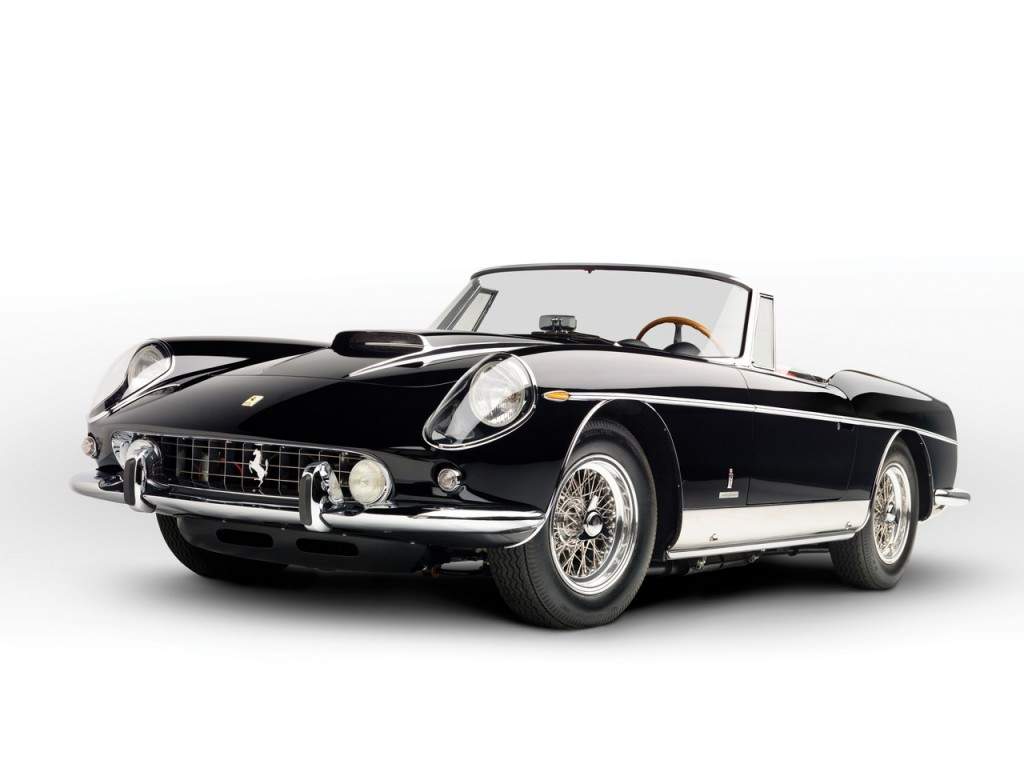
A very rare 1962 Ferrari 400 Superamerica Cabriolet
Collectors are probably aware of the Ferrari ’400 Superamerica’ which we discussed in a post here.
What is not widely known, even among vintage Ferrari aficionado, is that Ferrari produced some convertibles of this already rare series. Only six short chassis or SWB convertibles were made. The car in the main picture is one such car.
Officially called a 1962 Ferrari 400 Superamerica SWB Cabriolet by Pininfarina. These cars, all 400 Superamerica’s were Ferrari’s top of the line car. It was the ‘Enzo’ Ferrari, or ‘La Ferrari’ of today – reserved for the top collectors, captains of industry and kings. Only the top customers of Ferrari would ever see a 400 Superamerica.
So when a convertible was presented – it was the icing on the cake.
This car above (main picture) is special in several ways.
To start off with it is extremely rare – only six were ever made. Secondly this car is the only known version with covered headlights. Third like most 400 Superamerica – only the finest materials (leather) and technology was used (disc brakes). The engine was a powerful 340hp, triple carburettor that made the engine of the Ferrari 250 california spyder look rather unimpressive. The car was the finest open – top Ferrari available in the 1960s. This splendid Ferrari is coming up for sale at RM Auctions in May in Texas. Only five years ago RM sold the car for €2.8m (presumably to the same family). What makes this interesting is that when it does get sold we will get a very good idea of the 5 year return of owning a rare 1960s Ferrari sportscar.
(Main picture credit: RM Auctions. All pictures below credit RM Auctions)
Below the beautiful lines of this very rare Ferrari 400 superamerica convertible. Notice the chrome line that goes from the rear light all the way to the front.

The front of the car is equally as beautiful. It reminds you of the great styling found throughout the 1950s and 1960s.
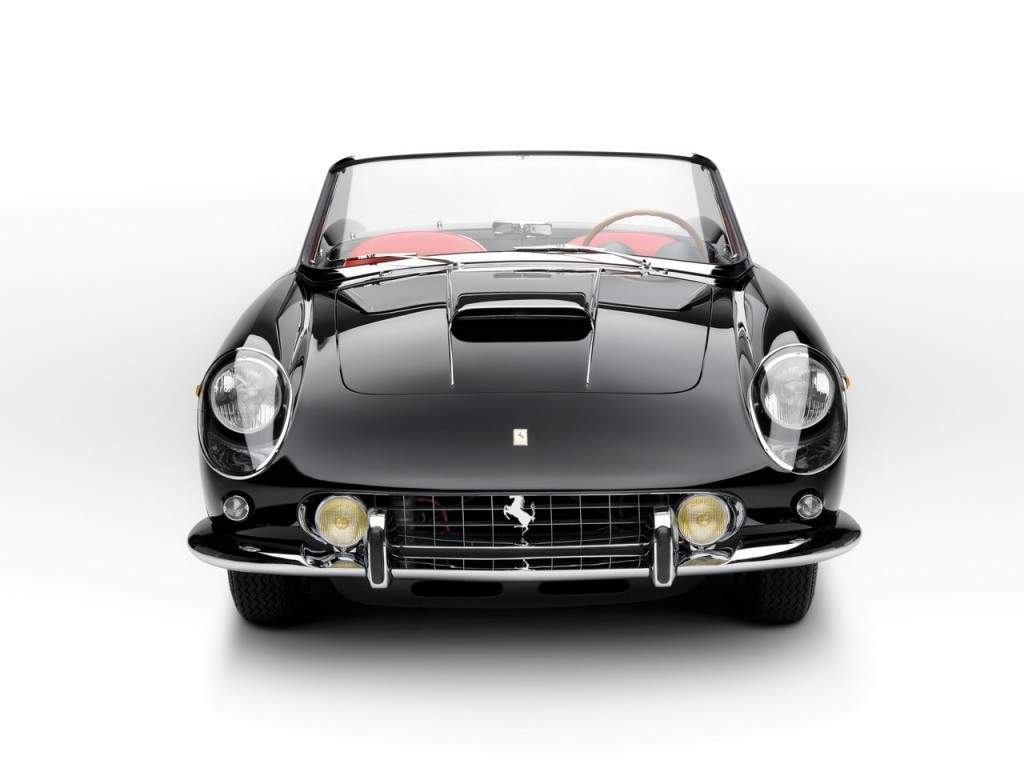
The car is a dream from the side as well. Notice the very rare and original factory hardtop that comes with the car
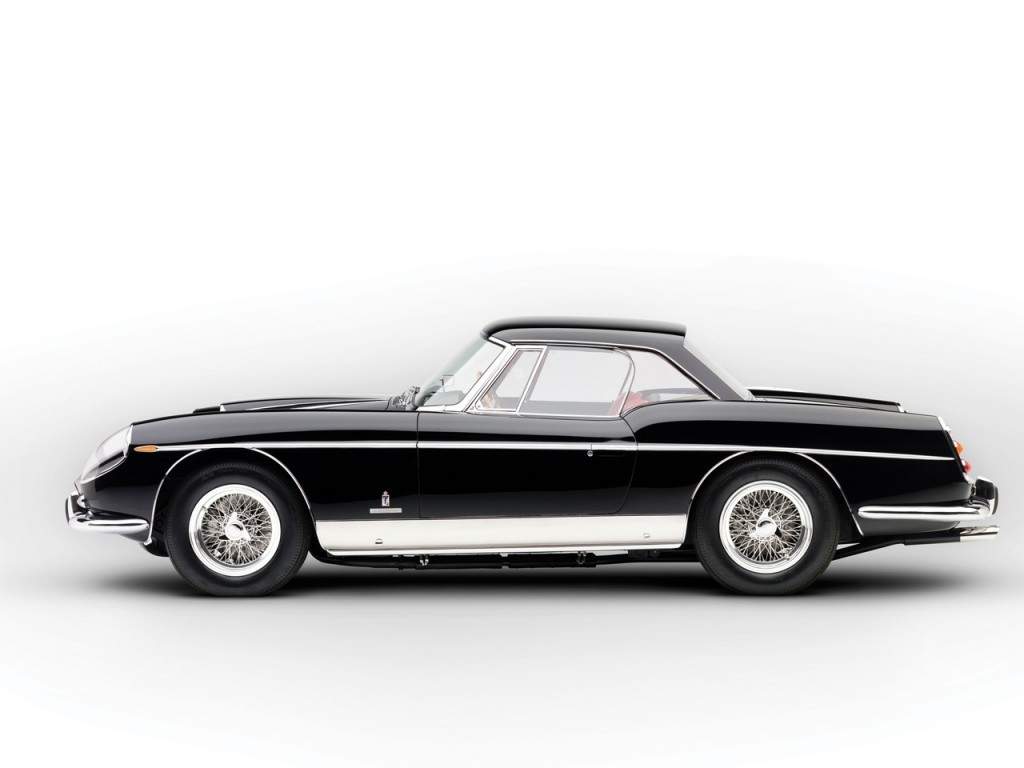
It is not suprising that Pininfarina is considered the master of design. The car below is among the best of his work.


Collecting: A psychological perspective

I am sure you have heard it before.
A watch collector saying: I love vintage watches- especially the hunt, the thrill of finding the perfect example. Or a car collector determined to find another rare Ferrari despite owning a dozen cars in his garage already. Why do humans collect things? Why are so many collectors obsessed with finding the next best thing? Why do collectors need to hold on to things and why do they accumulate?
I wanted to find out and ordered the copy of ‘Collecting: An unruly passion‘ by Werner Muensterberger (Muenster).
He looks at collecting from a psychological perspective and his findings are fascinating.
Lets face it. If your a collector- your likely obsessive about your things.
Many collectors (including myself) treat their collection of watches and cars or art not like objects but almost like a living being, a friend. Collecting is stimulating and can be immensely rewarding. Collecting is about making mistakes and learning from them – both essential lessons in life.
I admit with no hesitation: I am addicted to collecting. But I know I am not alone.
Many collectors are so obsessive about their collections, that it can often disrupt their social obligations, work and family.
The truth is that often serious collectors favour their things more than they do people. If you can relate to this, don’t worry, there is a psychological reasoning behind it. It is widely known that collecting is a pleasurable exercise. And humans by nature are attracted to pleasure.
However Muenster argues that collectors are motivated by much more than momentary pleasure. Indeed if a collectors pleasure was momentary he or she would be happy with one watch, one car, one piece of art or one handbag. Instead when a collector finds what he or she is after they repeat the exercise over and over again.
Muenster argues that repetition is mandatory for collectors. That is why more often than not, most collectors have more than just one or two of something. The reason why collectors repeat the ‘thrill or the hunt ‘of finding the next item is a form of ‘escape’ according to Muenster.
In looking at various collectors Muenster found that they often had traumatic experiences as a child and felt insecure and thus often find escape and refuge in terms of collecting objects later in life. Collectors often tend to create ‘artificial companions’ in the objects they collect (surely many car and watch collectors can relate here).
Furthermore Muenster argues, collectors often attach life like power to their objects which in turn make their owner feel special or different.
Again I could relate to what Muenster was saying.
Indeed reading Muensters book made me reflect on myself and I wondered if he might be on to something. I did some brainstorming and asked myself the following questions. Am I indeed a compulsive collector? Do I seek security in the objects I collect because I sometimes feel insecure like most collectors do according to Muenster? Do I collect things in order to escape my past? Did I experience insecurity as a child and have traumatic experiences like most collectors do?
While I will not reveal all the answers in this public post, I will admit that Muenster is indeed on to something.
The book – ‘Collecting: An unruly passion-psychological perspectives’ by Werner Muensterberger Princeton University Press 1994
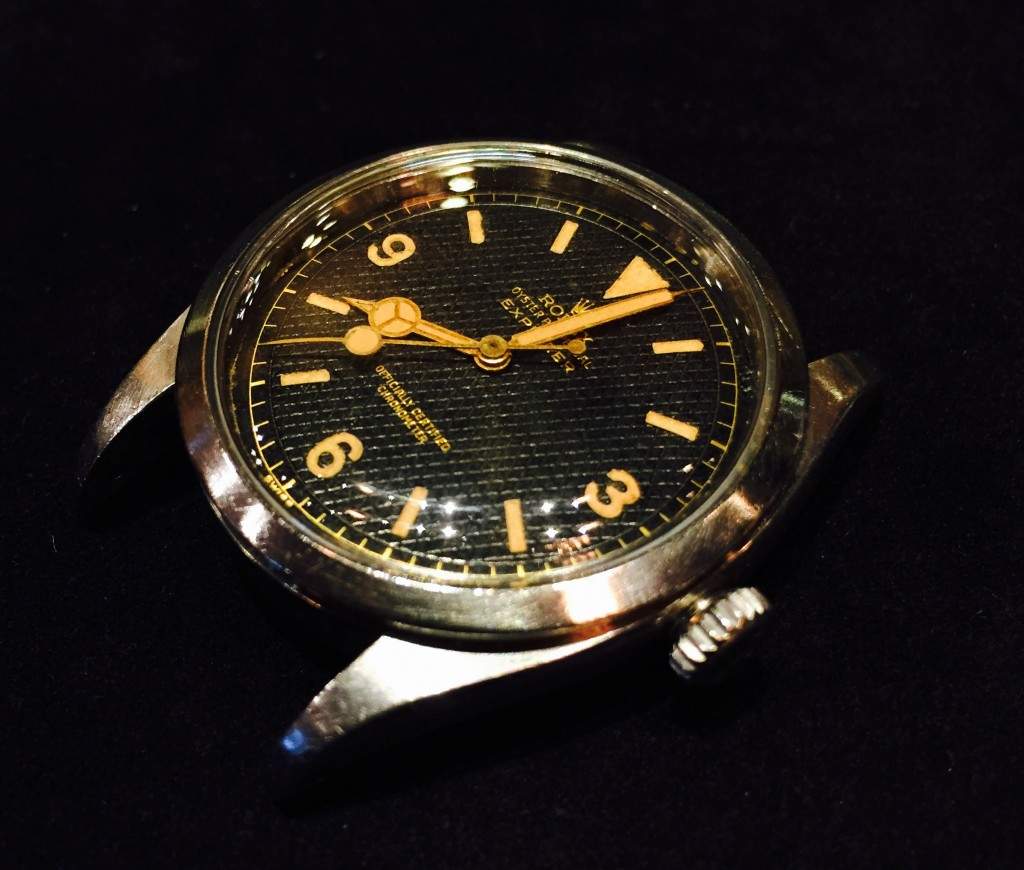
Rolex 6350 Explorer

When you think of vintage Rolex it is likely that you think of Submariner, GMT or the legendary Daytona. For some reason the Explorer comes last.
This should not be the case.
For collectors who appreciate history and rarity the Explorer is perhaps more interesting and rewarding than any other line within Rolex.
It is worth reminding collectors that the Explorer line has a richer history than either the submariner or the GMT. The Explorer line was registered by Rolex in January 1953, before the submariner (1954) and also before the GMT Line (1954/55).
While many believe that Rolex launched the Explorer due to Rolex supplying watches to Sir Hillary and Norgay who climbed Mount Everest in 1953 – this was not the case.
Rolex simply supplied some Explorers to the expedition but the line had existed before 1953 (with references 6150 and 6098, 6298). But the first watch to carry the Explorer name on the dial was the reference 6350 (main picture above) and this was launched also in 1953 – the same year that Hillary successfully climbed Mount Everest.
Rolex- the clever marketing company- of course then linked the Explorer watch with these successful watch climbers (see ad below) – and from then on the Explorer would be identified with Hillary & Co.
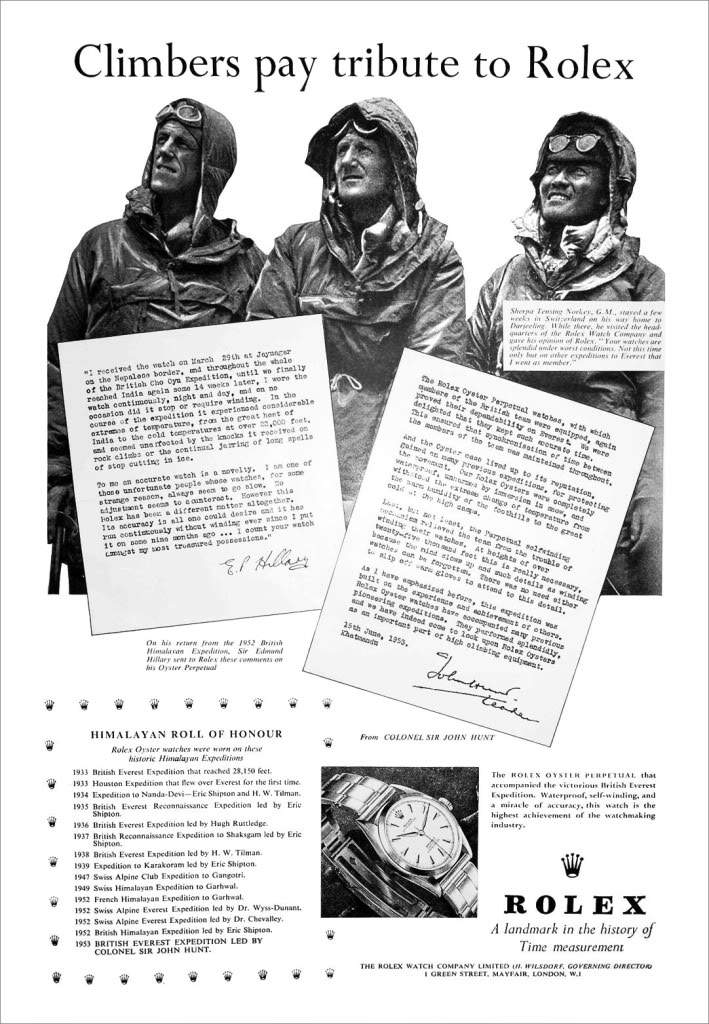
Credit: Jakes Rolex watch blog
Background information on Explorers in general
The explorer owes its existence to Rolex’s efforts to improve their waterproof cases (Rolex was the first brand to make their watches water proof-thus the Oyster designation) and improve the robustness of the case.
The origins of the Explorer stems from the ‘Bubbleback’ watches, as the ‘Bubbleback’ Rolex was extremely tough and solid. After several early explorer models like the 6150 and 6098, Rolex officially carried the ‘Explorer’ designation on the dial with the 6350 model in 1953.
The 6350 model is itself an improvement of the ref 6150 which was an earlier model with only the word ‘precision’ on the dial.
For our in-depth report we will be concentrating on the first Rolex Explorer that actually had the name ‘Explorer’ on the dial (we will be focussing on the rare ‘honeycomb’ version).
In the vintage Rolex world- the 6350 Honeycomb, is without a doubt, one of the most beautiful and collectible models to own. However much like other early and important Rolex models not much has been written on the Explorer 6350 in general let- alone the sought after honeycomb version.
This report is an attempt to change that.
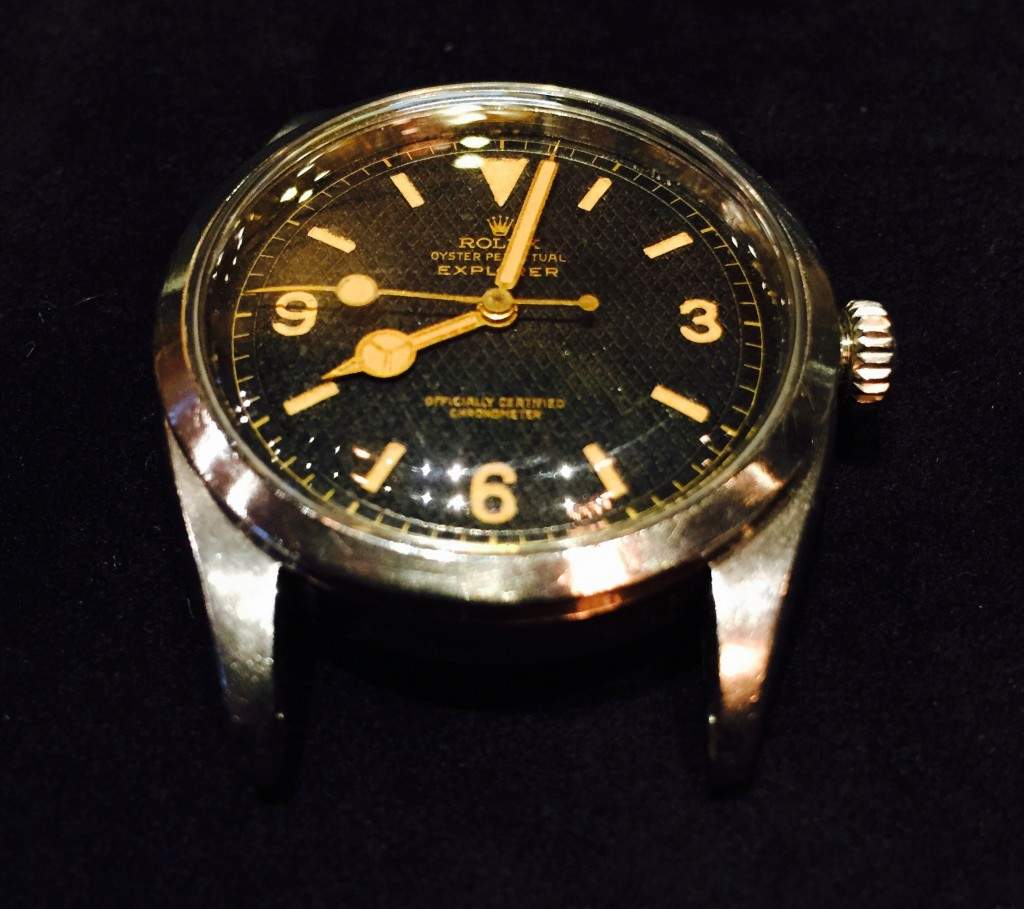
Rolex Explorer 6350 / Dial
Before we go into the ‘honeycomb’ 6350, a quick word on the 6350 Explorer in general.
Most of the 6350 explorers carried a dial that was a chapter ring, gilt dial and black gloss much like the previous models 6150. The normal 6350 Explorer dial are also very collectible and beautiful (see picture here)*. However Rolex also made several special versions of the 6350 that carried an unusual, rare and textured dial known as the honeycomb version.
One of the first things you notice about the 6350 Explorer – honeycomb is the marvelous dial (see picture below). It is what collectors often refer to as ‘honeycomb’ or guilloche.
This specific dial gives the watch a completely different look than other explorers that came after it, like the 6610 (see example here)**.
The texture of the dial looks like a waffle and often collectors term this dial ‘waffle dial. There are very few Rolex models which have this dial, perhaps the most famous being the 6541 Milgauss (see example here)*** – however earlier Explorer models like the 6150 and 5500 had them as well.

(Credit: Jim Gerber).
The 6350 is the first Explorer to have the name ‘Explorer’ written on the dial (although some 6350 had no Explorer name on the dial like this example)**** and thus unofficially is the first proper Rolex Explorer for most collectors.
As with most early Rolex models, the dial is gilt (golden type print) and is a so called chapter ring (due to the ring around the outer circumference of the dial). Rolex also stamped it OCC or ‘Officially Certified Chronometer’.
In terms of the hour markers- the Explorer was the inspiration for all legendary dials that would come afterwards including the 6200 Submariner and the 5513 ‘Explorer dial’.
The 6350 dial is among the most beautiful in terms of simplicity and readability and thus its appeal.
The Explorer was made for mountain climbers and explorers who needed to read the watch easily and thus the explorer dial type layout was born.
This dial layout or ‘Explorer dial’ is the most sought after dial in the world on submariners – but its inspiration and design comes from the Explorer watch. Thus collectors refer to this dial layout on other models like the Submariner as ‘Explorer dial’.
It is sought after not only because it is rare but also because it is very readable and very attractive in our opinion. Like many other Rolex references (think 5512, 5513) different variations of the dial exist and it is known that the 6350 had also double signed dials- though they are extremely rare (see example here from Serpico & Laina).*****
*Credit: Jon Yu**Credit: Nicolas Fondaneche (Amanico) PuristPro ***Credit: Mike Wood (old watch shop) ****Credit: Christies *****RolexPassion Report

Hands
In terms of hands various versions exist for the 6350.
The most common pair of hands were the elongated minute hand that thinned out in the end and the ‘Mercedes type’ hour hand. These type of hands are the most attractive in our view as other hands existed (see watch below on the right).
It is worth going into detail regarding the hour hand of the 6350. The astute collector will notice that this hour hand is the exact same as the hour in the 6200 and the 6205 – both legendary Submariner models.
The hour hand has a ‘long neck’ causing the tip of the end to stretch further out on the dial. In fact it stretches out so far that the end extends over the hour markers.
Since the 6350 explorer came long before the submariner we believe the inspiration for the Mercedes hands and long hour hand came from the Explorer (for Submariner 6200 hour hand see here* and for the hour hand of the Submariner 6205 see here).
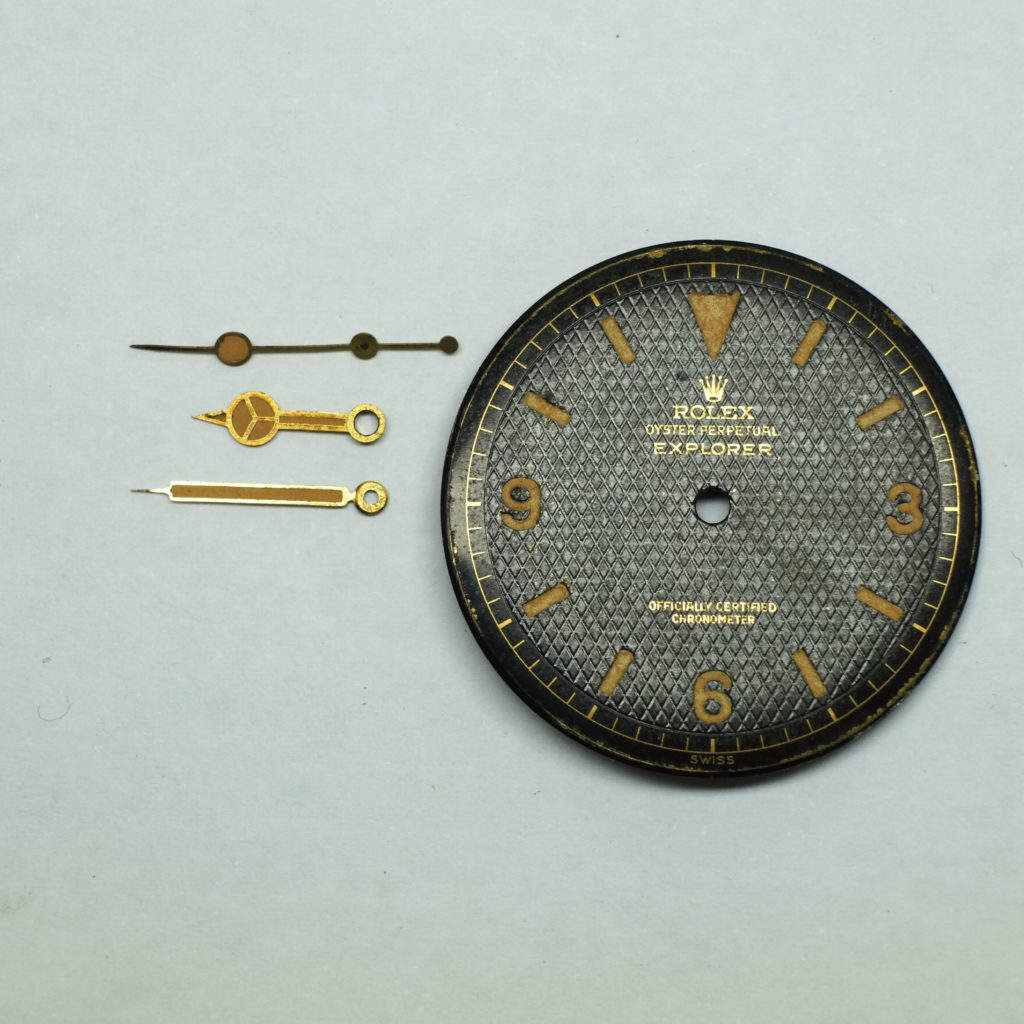
(Credit: Jim Gerber).
Did you notice the similarities in the pictures?
Here is the evidence (as the previous pictures show) that the legendary hands of the Submariner line were inspired by the Explorer.
Some 6350 Explorers carried the ‘pencil’ type hands which appear also to be correct and were available at the time (see right watch on the picture below). Both versions carried gilt hands. As far as the ‘second’s hand is concerned most were the large ‘lollipop’ type second hands that were also found on other Rolex models that came after like the 6205 and the 6200 Submariner – which were introduced a year later.
The other version (the 6350 on the right) with pencil hands carried a different seconds hands which is exactly the same as the 6204 Submariner- the first Rolex submariner which would be introduced a year later in 1954.
In fact, it might be fair to say that the 6350 Explorer was the basis on which Rolex designed the hands of 6204 Submariner.
Both hands of the 6204 and the 6350 are almost identical in some cases (see the 6204 hands here). Both watches below are the 6350, but because of the hands, both models appear to carry a completely different look.
*Credit Philipp Stahl
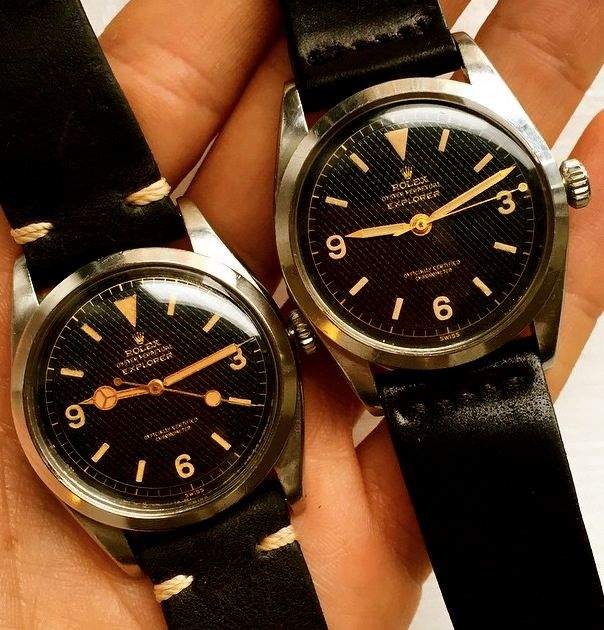
(Credit: Andrew Shear)
Case/ Case back / Movement & Winding crown
The case of the Explorer was robust as the watch was designed for ‘Explorers’.
This meant the watch could withstand extreme temperatures. The case was specially strengthened and uses special lubricant making this watch usable between -20 Celsius and +40 Celsius.
Case of the 6350 Explorer below.
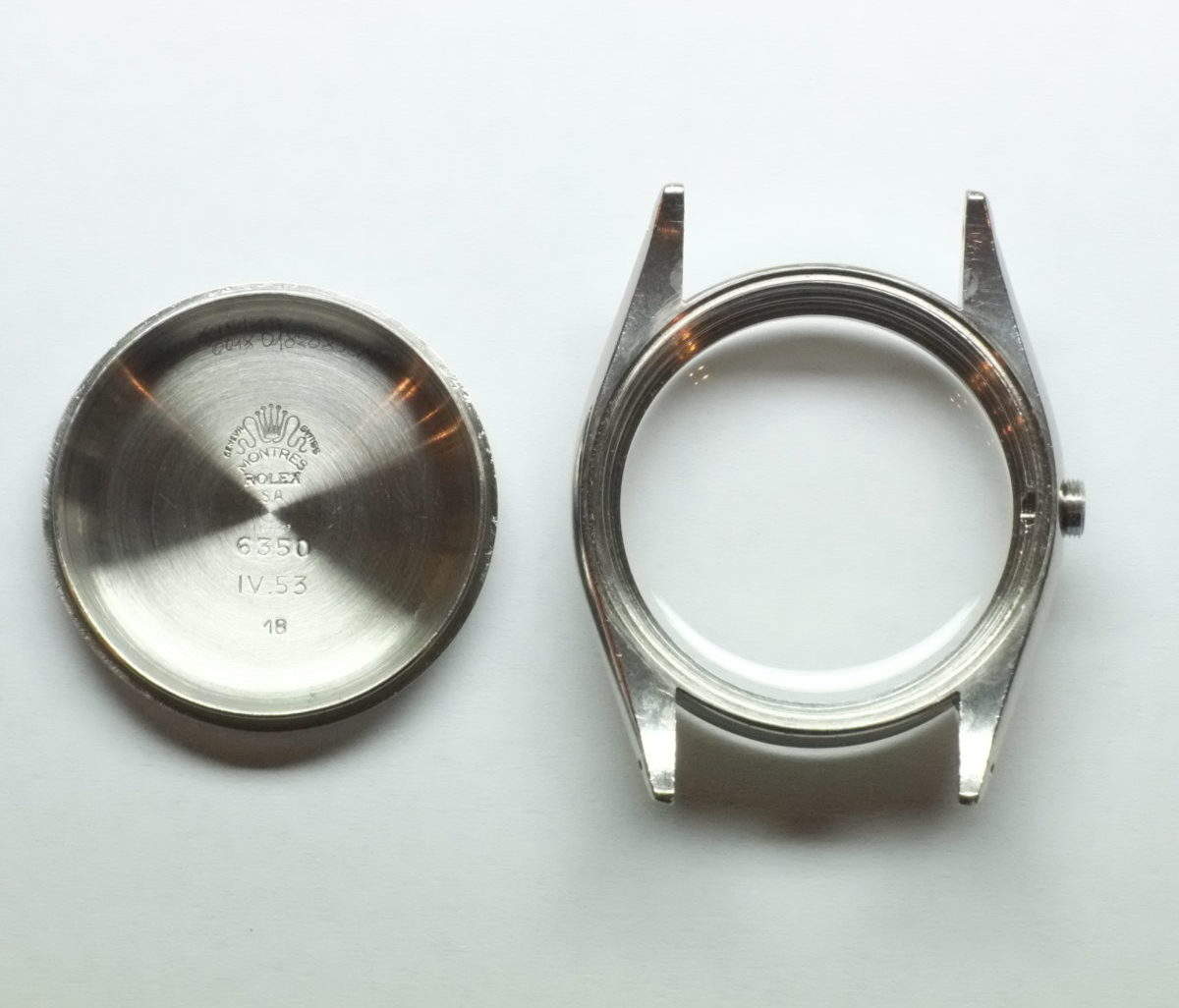
* The movement in the 6350 Explorer is unchanged from the prior model which was the 6150 and carries the A296 movement. Front of the movement.
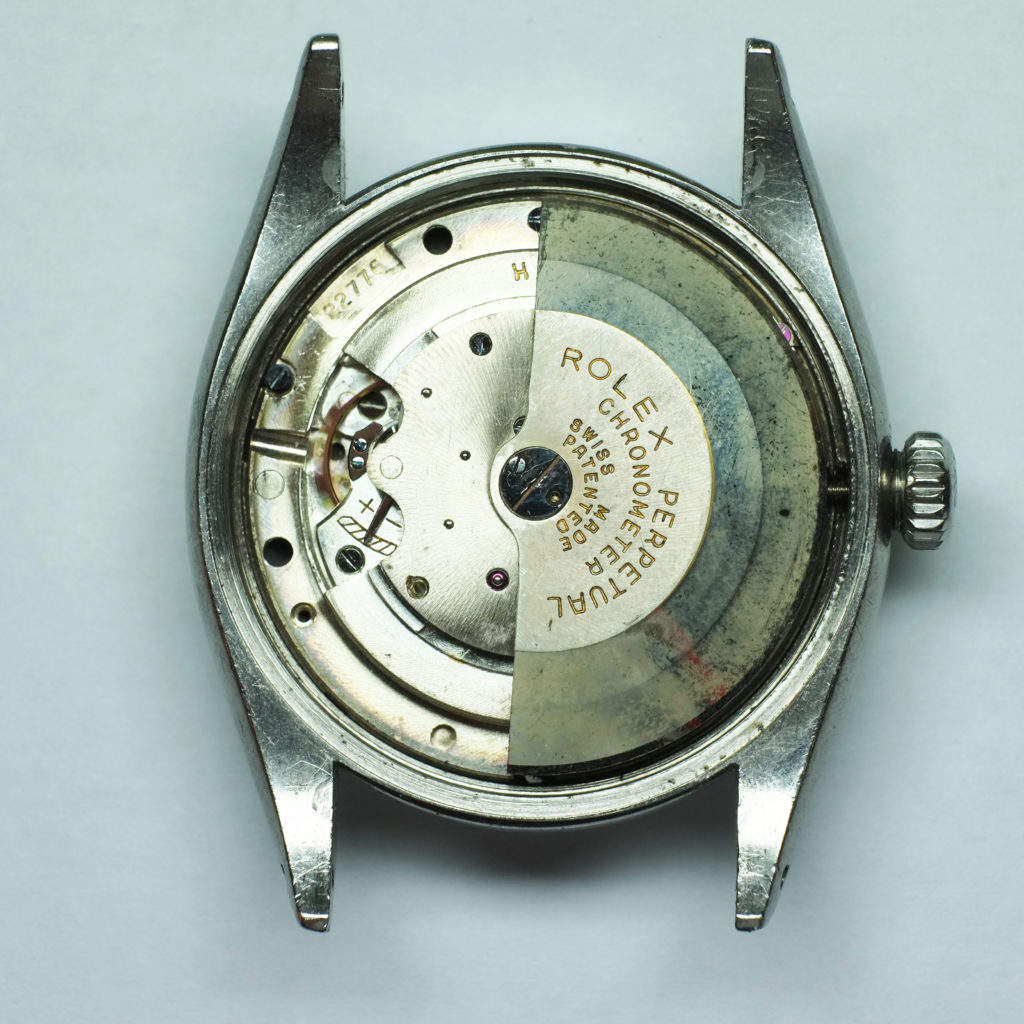
Back of the movement below.
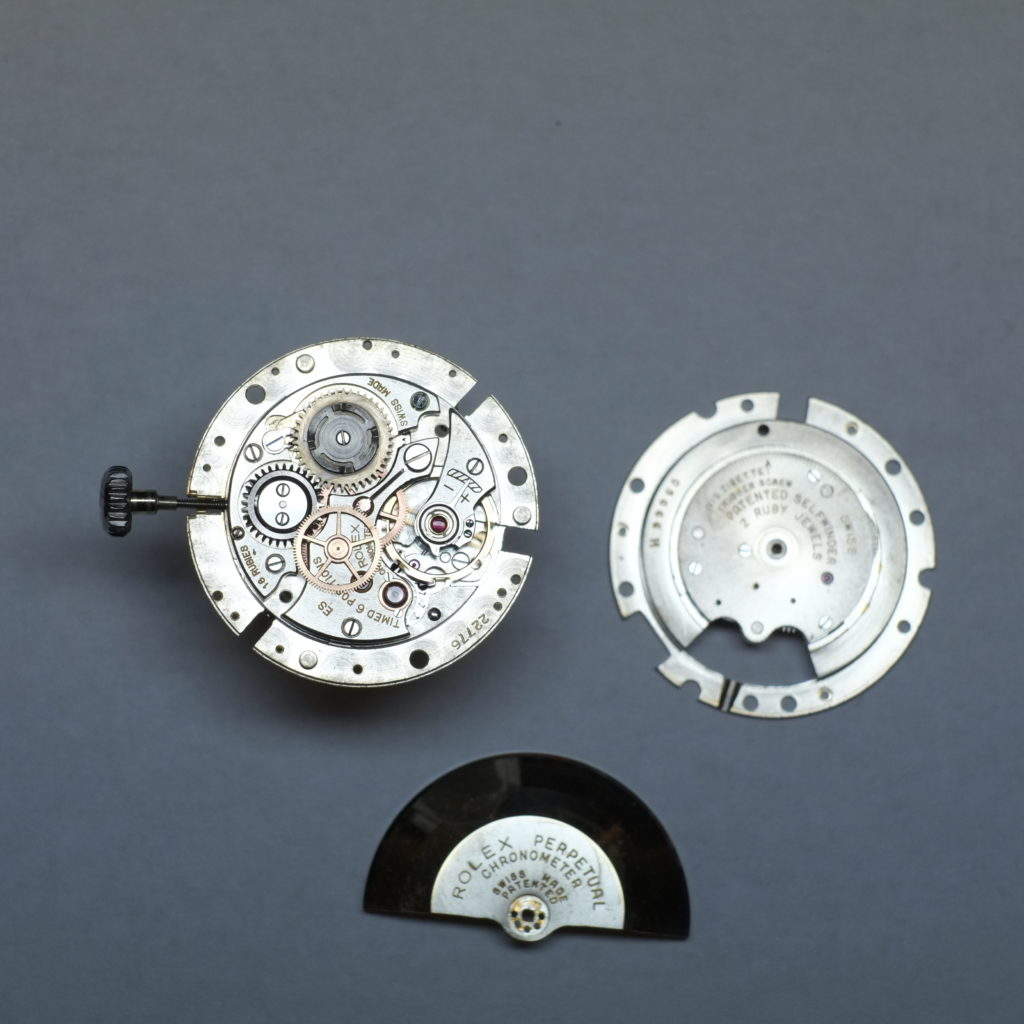
The case back is similar to other early Rolex models.
The ‘Octopus’ type signature near the crown can be found similar to the 6204 and the 6205 submariner models which came only a year later.
As is often the case with Rolex the model number is clearly visible below the Rolex sign along with the period the watch was made (third quarter 1953).
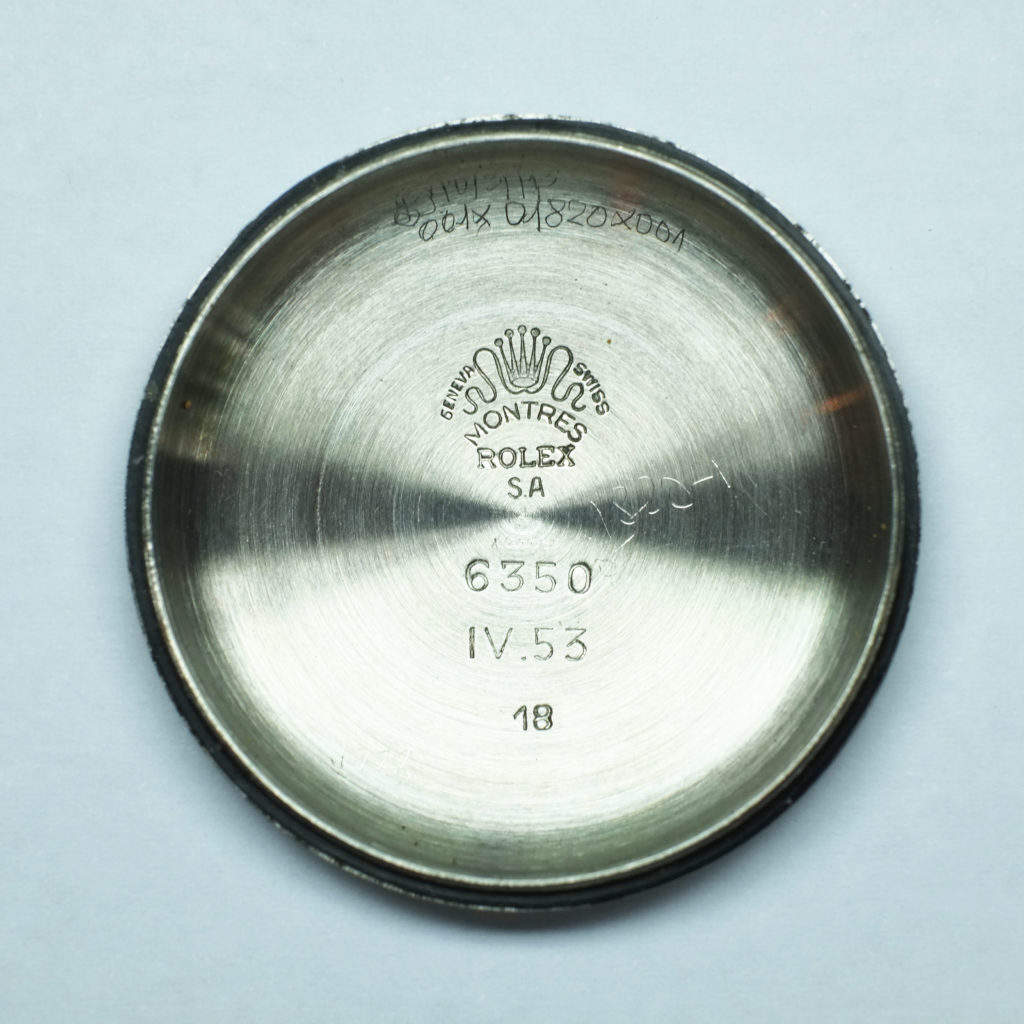
The winding crown like other Rolex models of the period (6204 & 6205) is a Brevet type and should carry the plus sign (+) below the crown as is clearly visible below.
These crowns are rare and most of the time have been lost along the way. Watches that retain the original crown (as this one does) are rare and desirable.
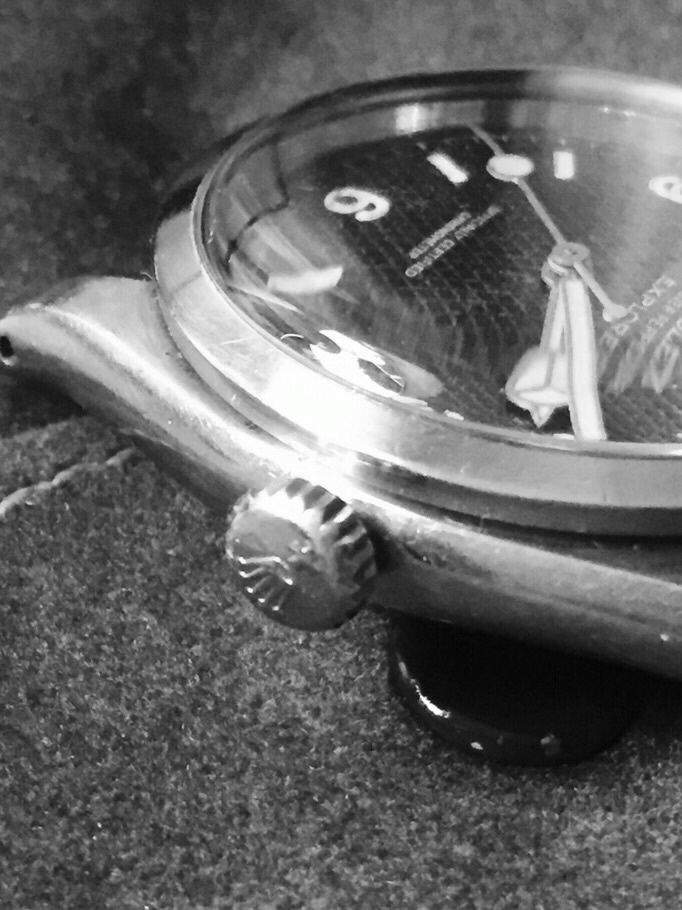
Papers
The 6350 is a chronometer movement and therefore the 6350 would have most likely come with Chronometer papers like the one you see below.
The papers below belonging to the watch was an 6350 Explorer originally purchased in Germany by a Korean War Veteran who also served in the second world war. In the 1950s Mumbai was known as Bombay and Havana was an important market for Rolex – quite unimaginable today.
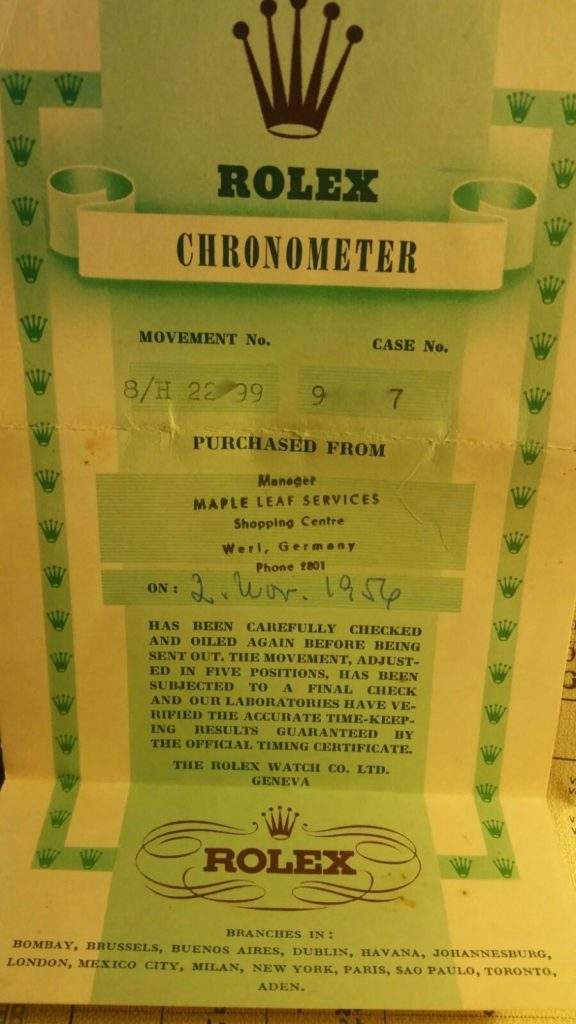
(Credit: SC Song).
Below the Controle de la Marche papers indicating the watch accuracy test was passed by Rolex. It was issued in 1954 and the watch was sold two years later in 1956 (see above).
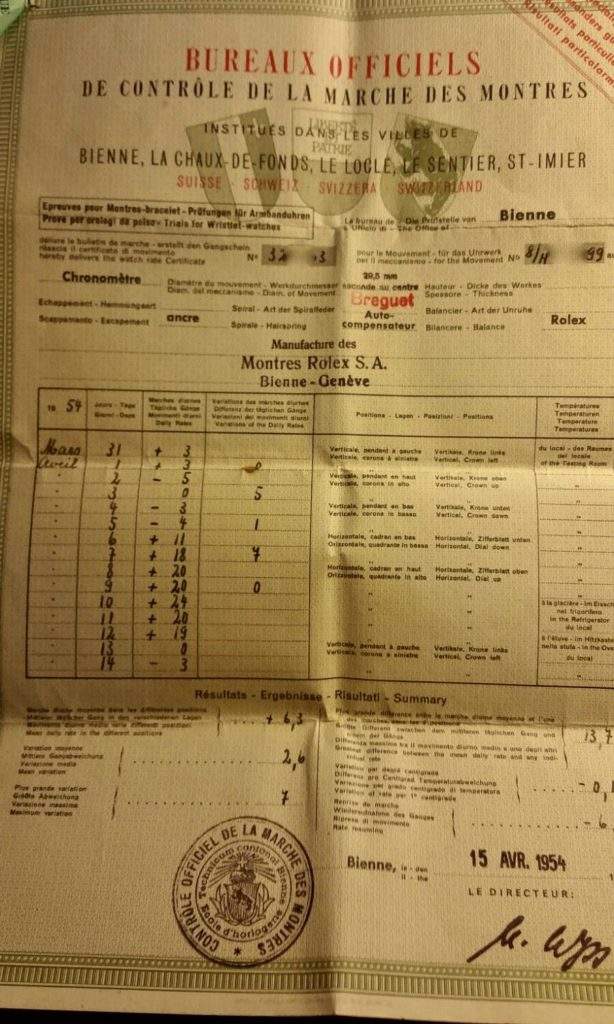
(Credit: SC Song).
Concluding thoughts
The Explorer is clearly in the shadows of the Submariner and GMT line not to mention Daytona. It has been this way for a long time and I don’t see why it would change in a significant way.
The public thinks (perhaps rightly so) that diving and flying is more ‘alluring’ than mountaineering. However collectors should be aware of the significance of the Explorer line not only to Rolex history but its influence on other lines.
The explorer line would leave its mark heavily on the submariner especially with the Arabic Explorer type dial layout being extremely sought after. Think 5513 ‘Explorer dial’ or the 6200 which is an Explorer dial. These watches are among the most sought after in the world and collectors pay large sums to acquire correct examples.
While the 6350 is extremely sought after and collectible (today good examples fetch $70-90′ooo) by comparison to the submariners, the sums are still modest. But collectors are starting to wake up and give the 6350 line in general the credit it deserves. Just recently, a 6350 Explorer honeycomb sold at christies for $70’ooo (and the example was not perfect).
Within the Explorer line there is one undisputed king, just like the 62oo is holy grail within the submariner line. It is the 6350 ‘Honeycomb’ version.
The 6350 honeycomb dial is among the most beautiful watches that were ever made in my opinion.
The watch is pure and timeless. The dial a marvel- a true piece of art. I think it will achieve Iconic status one day – and be considered among the true masterpieces that Rolex has made in the same league as the 6541 Miglauss, the 6200 Submariner, the 6542 GMT Master and the 6263 ‘Panda’ Daytona PN.
It has all the ingredients to become a true Icon. History, rarity and most important of all- beauty. The 6350 honeycomb is destined for great things.
NB: If your interested in how a 6350 Explorer dial gets serviced – please see our service report here.
A in-depth report would not be complete without a wrist- shot of course.
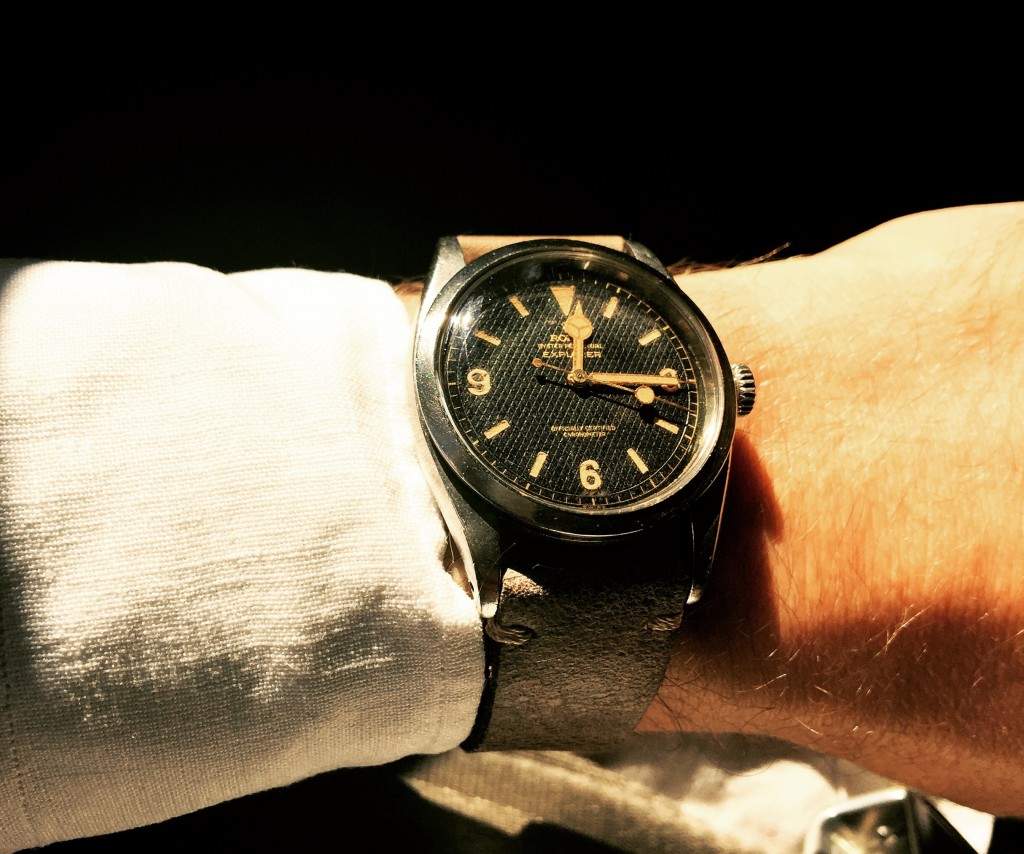
Another wristshot of the 6350 in natural sunlight.
The honeycomb dial is a marvel and among the rarest explorers ever made by Rolex

Watches and cigars. What is not to like. Notice the tablecloth and the watch dial both have a similar pattern that is textured.
